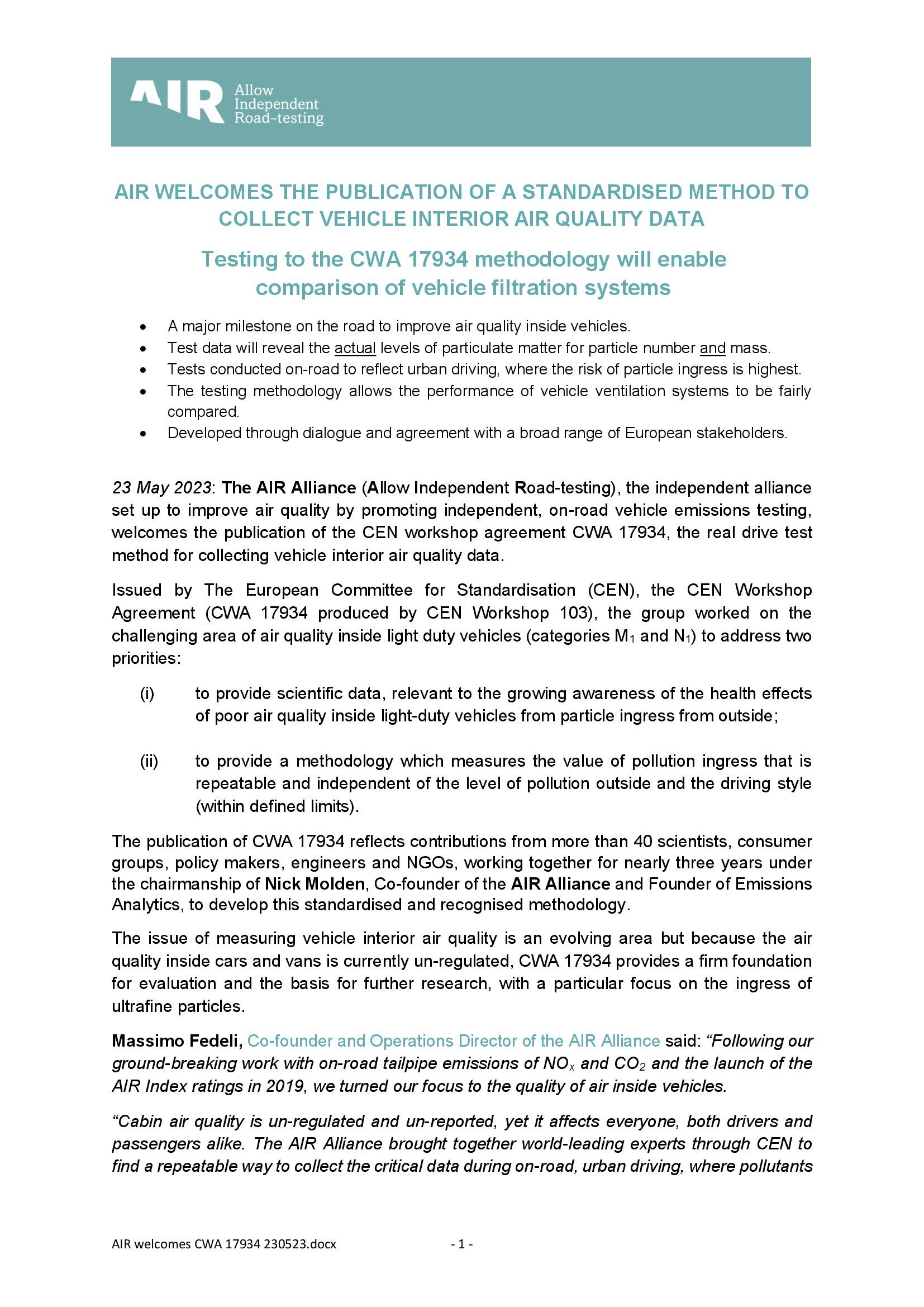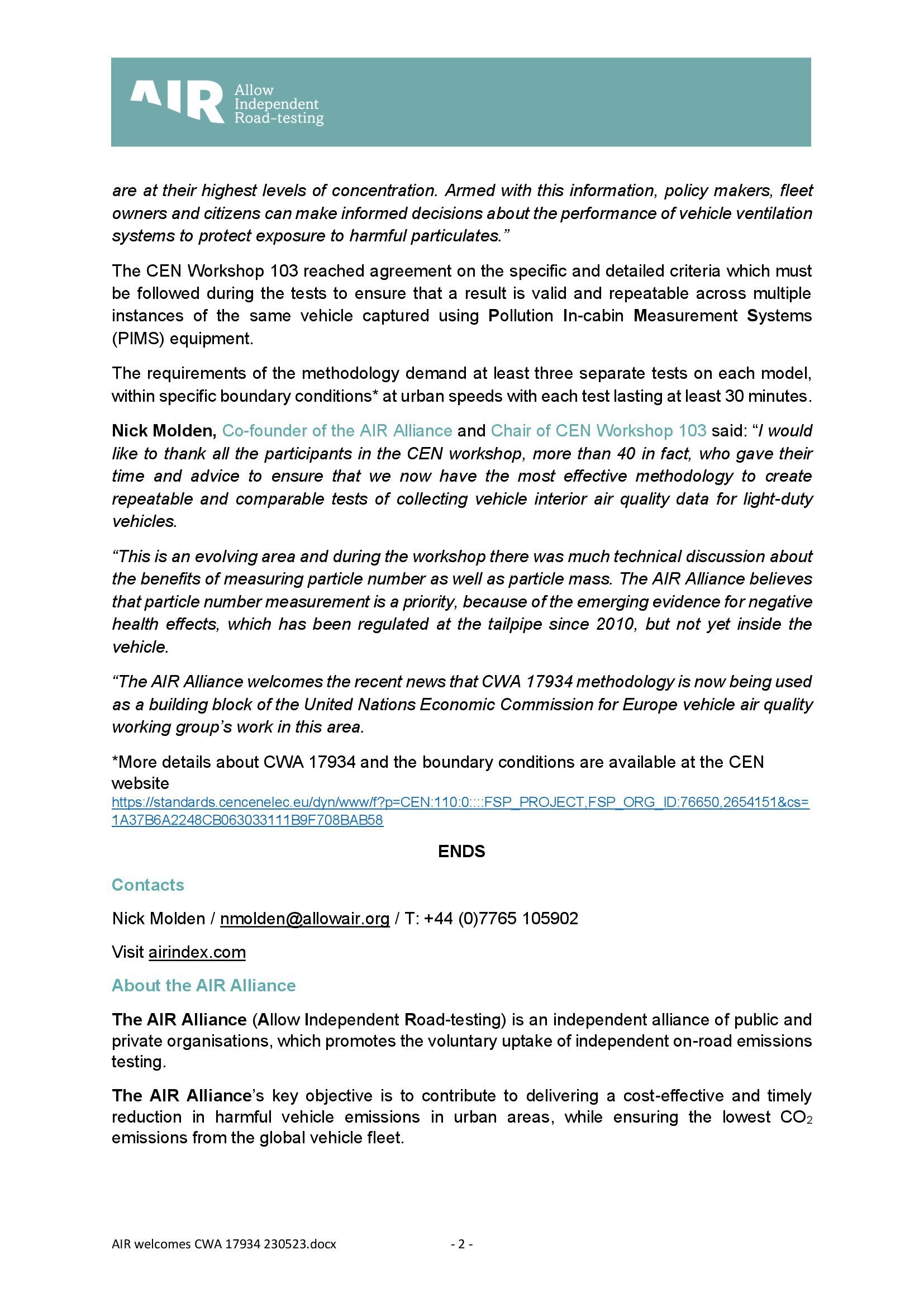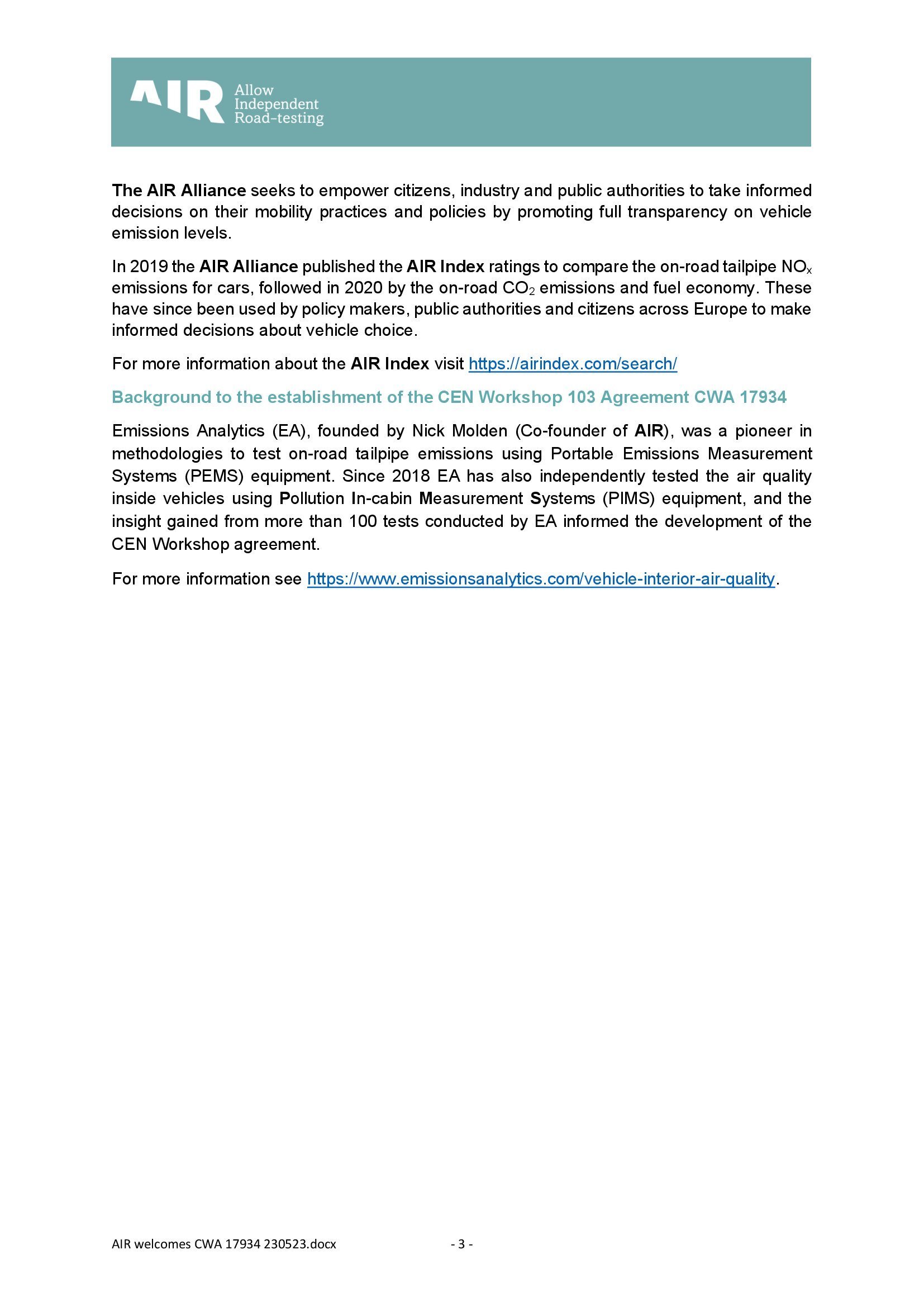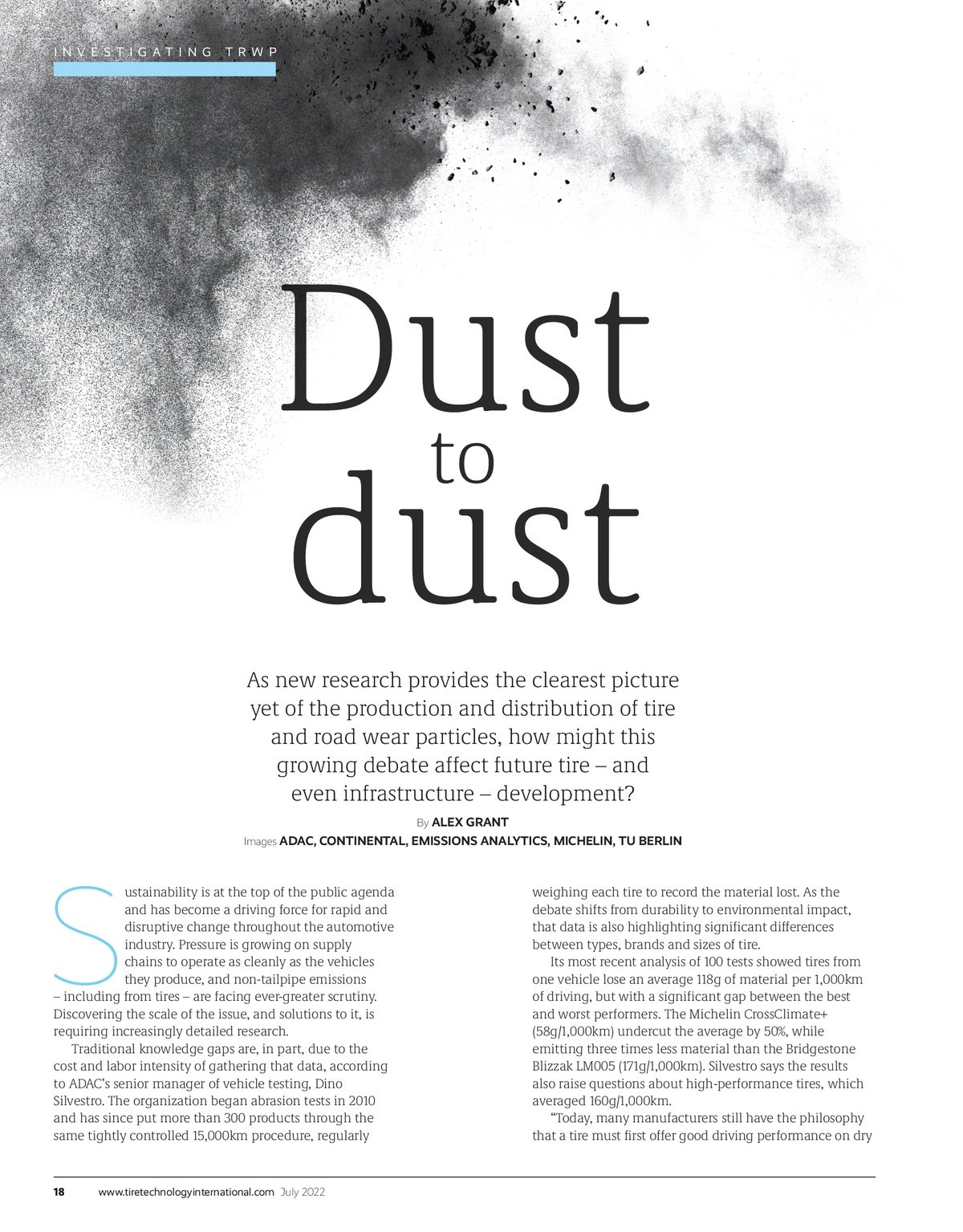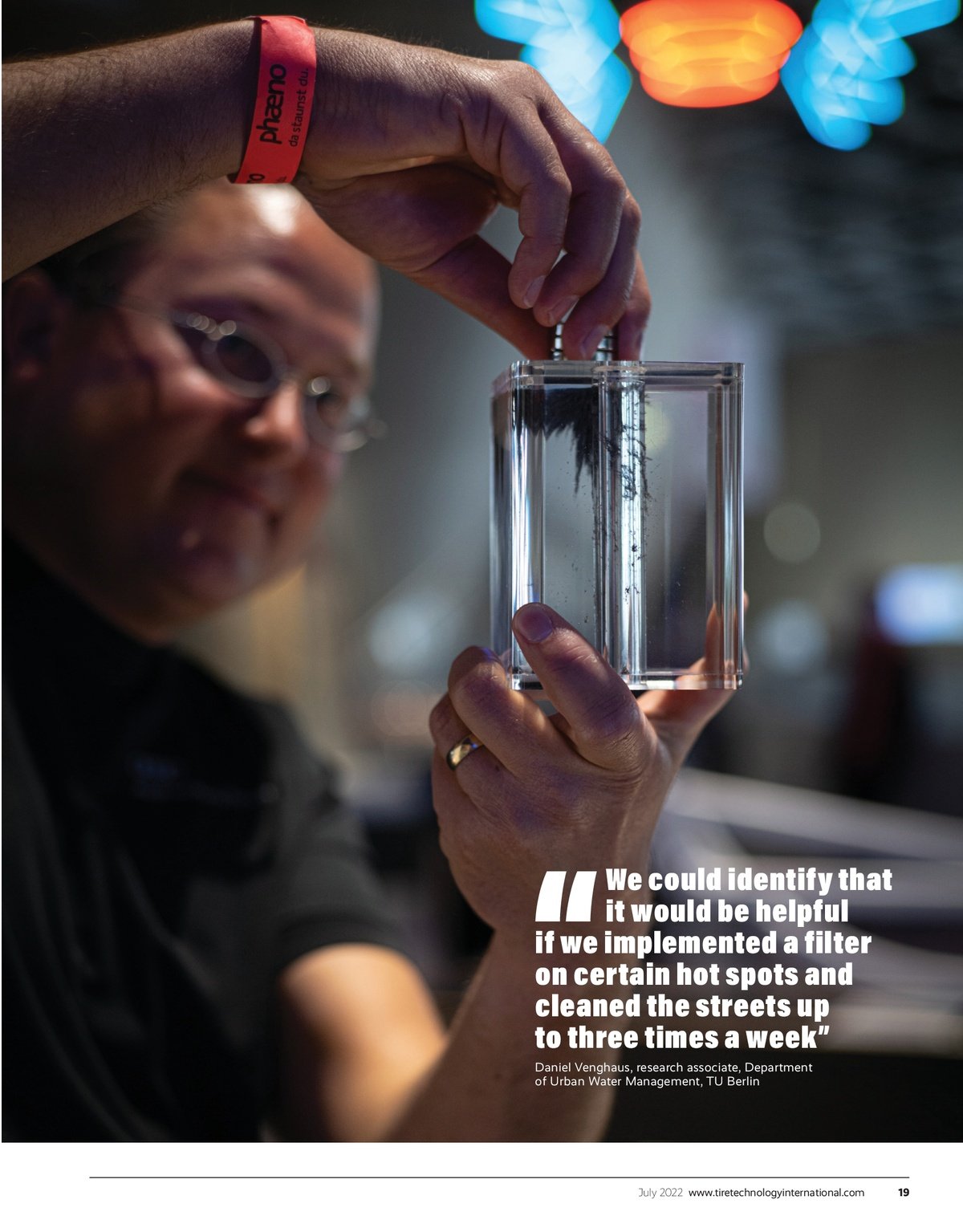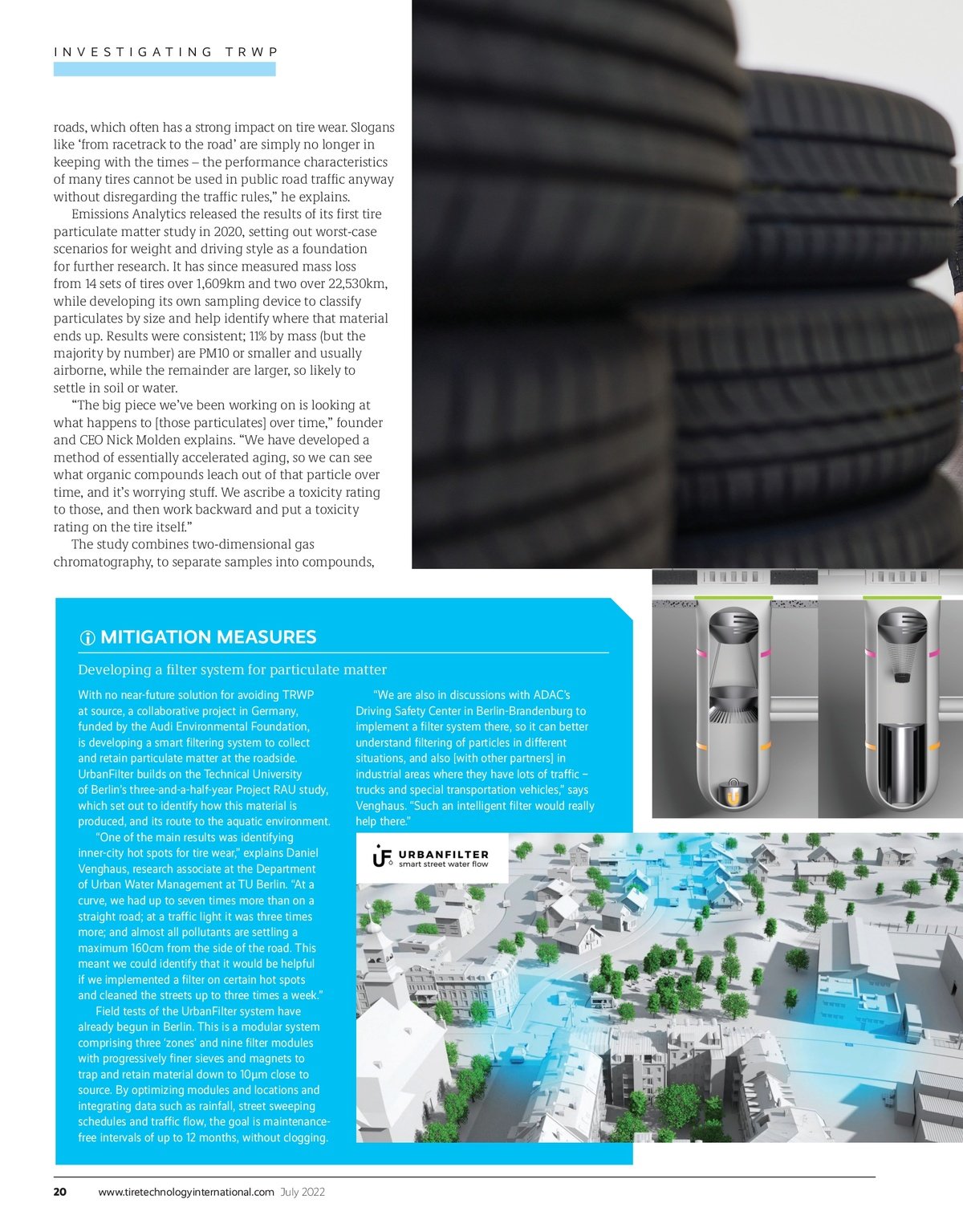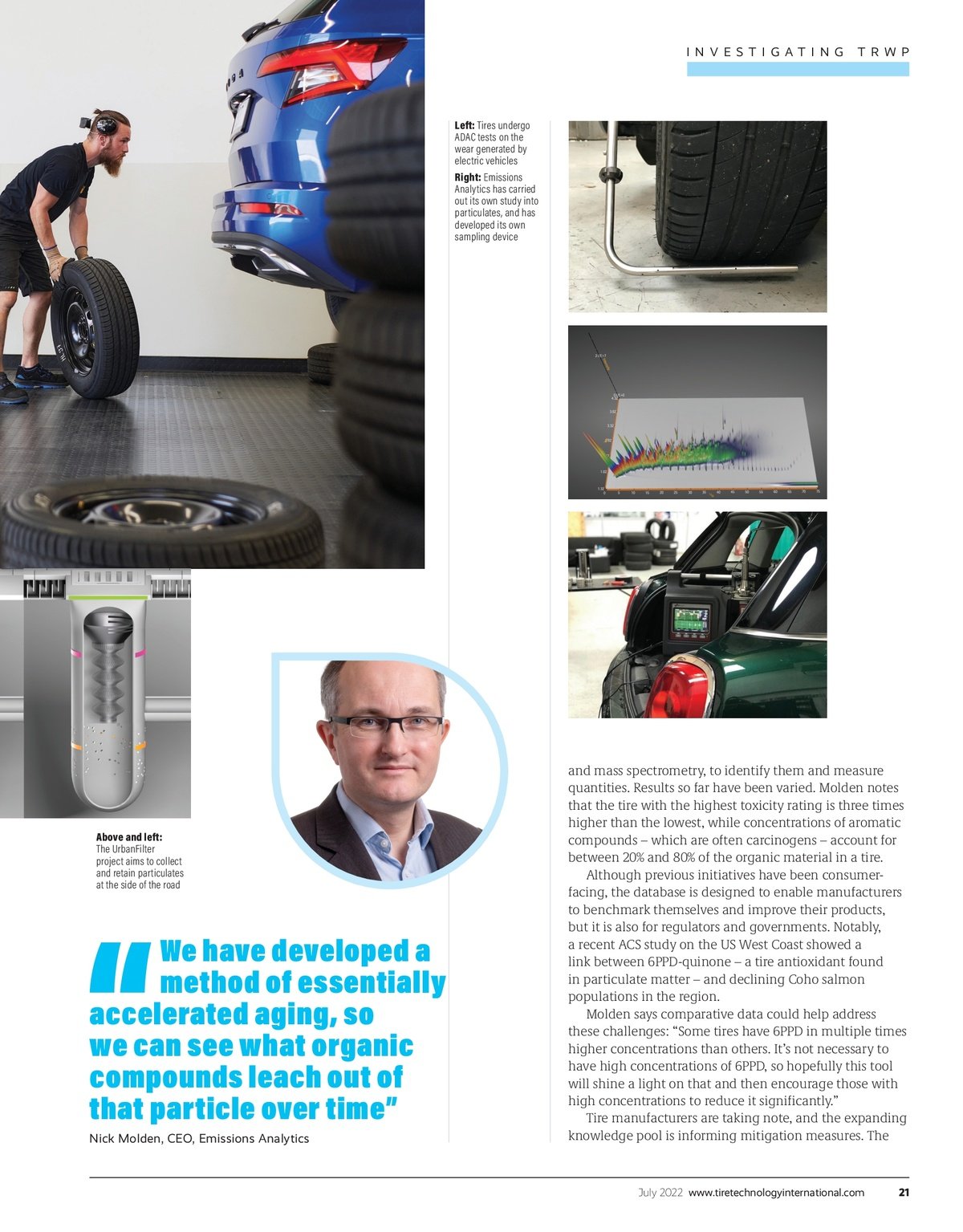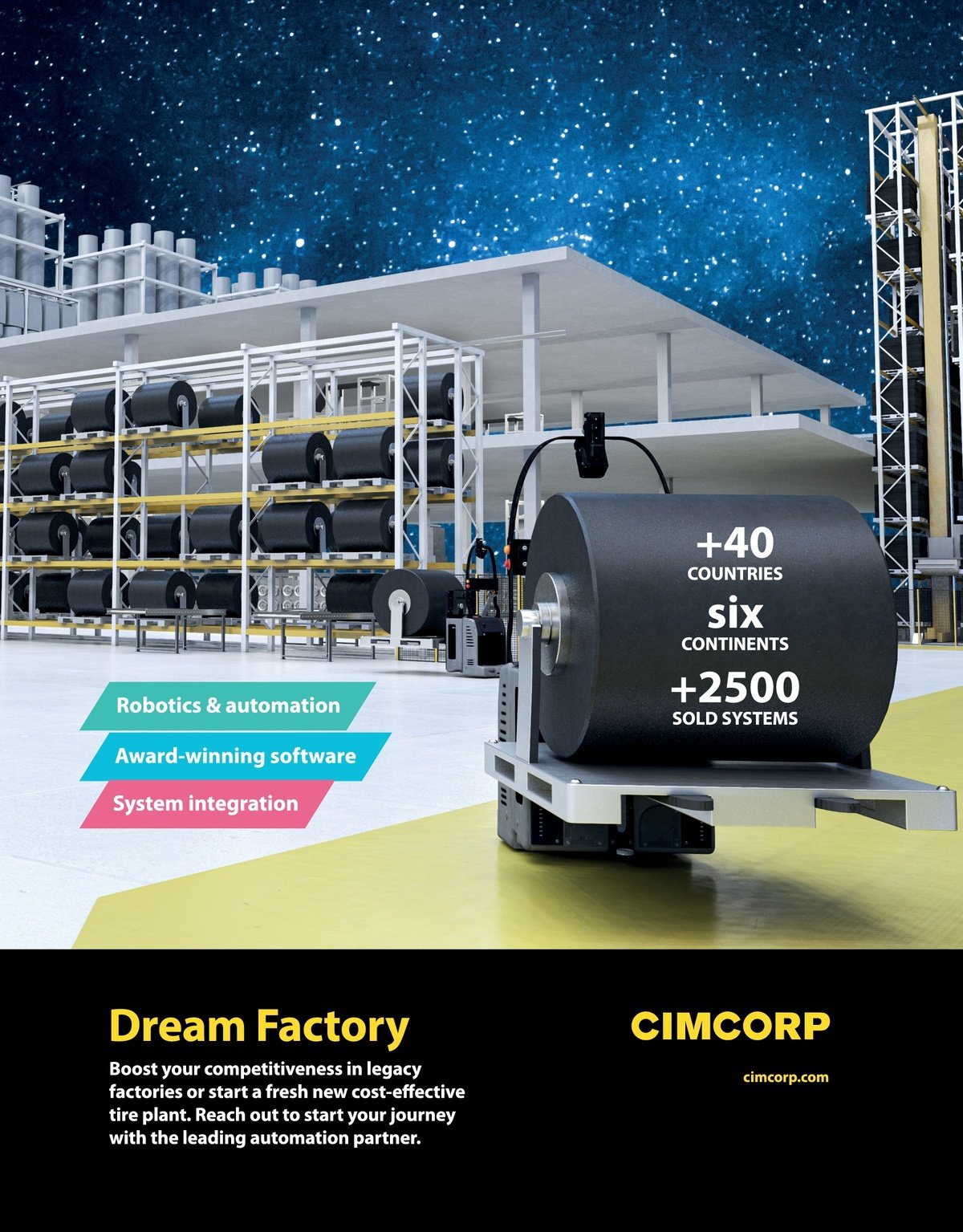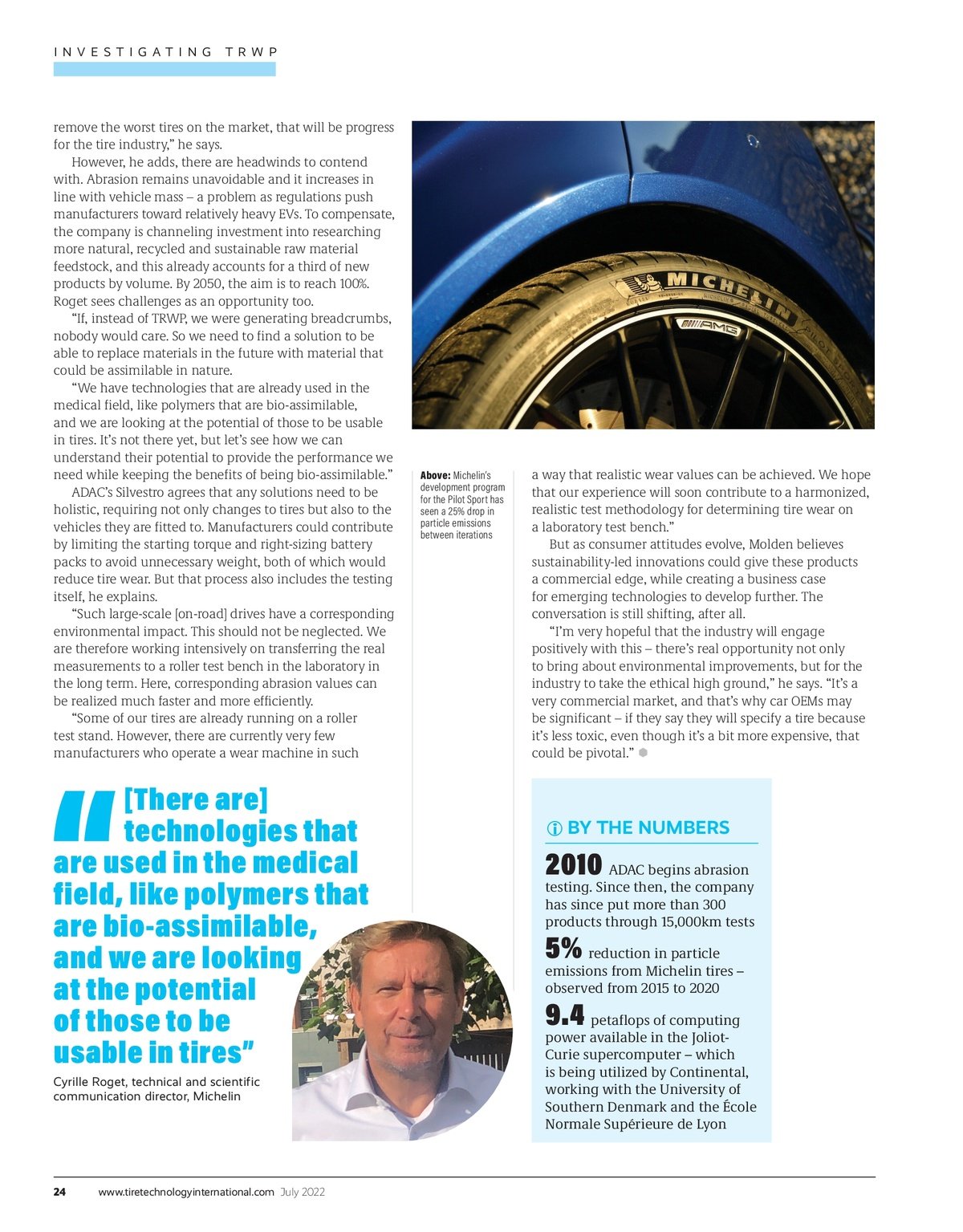Emissions experts call for reform of car taxation to be based on a combination of weight and mileage
· Simpler car tax system proposed, based on vehicle weight and miles travelled
· Would apply the ‘polluter pays’ principle
· Switching to 150 kg lighter car or driving 1,000 fewer miles will save £100 a year
· Experts call current VED system ‘a mish-mash of incentives and penalties’
Cars should be taxed on a combination of weight and mileage, according to a radical new study from emissions experts Nick Molden and Felix Leach.
Molden, who is the CEO of emissions testing company, Emissions Analytics, and Leach, Associate Professor of Engineering Science at the University of Oxford, will be launching their new book: Critical Mass: The One Thing You Need to Know About Green Cars at Keble College, Oxford, on November 25th and Imperial College, London, on December 2nd. The events will outline proposals for a simpler, more environmentally-credible road tax system.
The launch of the book will be hosted by Chief Executive of the RAC Foundation and former Director General at the Department for Transport, Steve Gooding, and Professor Gautam Kalghatgi, until recently Visiting Professor at the University of Oxford.
The book outlines in with brutal clarity that the current system for Vehicle Excise Duty (VED) is flawed, even calling it a ‘mishmash of incentives and penalties’.
The result is a powerful evidence-based thinking that has the basis to overcome bitter factional disputes between different groups trying to promote one powertrain over another. Former Secretary of State for the Environment and Deputy Prime Minister, Michael Heseltine, said: “I welcome this contribution to the most important challenge of our time.”
It is a timely release. Next year the so called ‘road tax’ will undergo a major overhaul and it will include Electric Vehicles (EVs) that are currently exempt from VED.
Starting April 1st, 2025, EVs will lose their VED exemption, however. That means buyers of new EVs will have to pay the next lowest first-year tax rate, which currently stands at £10. Once an EV hits its second year on the road, owners will be required to pay the standard VED rate, which is currently £190 and is expected to increase with inflation from April 2025.
The new legislation will also hit buyers of EVs costing over £40k with additional tax and used EV buyers and hybrid buyers will also have to pay more.
But Molden and Leach say there is a solution that is not only better for the environment, but simpler to administer and much easier to understand.
Molden explained: “Taxing a car on a combination of its weight and mileage offers a simple, potentially universal approach to pricing-in the environmental impact of cars while at the same time overcoming the objections to the current mish-mash of incentives and penalties.
“In our book, we offer an intuitive ‘proof’ of why mass and distance are fundamental to designing a system to incentivise the purchase of ever-greener cars and this is contrasted with other flawed bases for judging environmental impact, such as measures of vehicle efficiency, including energy and fuel efficiency, as well as elements incorporated in the current system such as fuel type and laboratory carbon dioxide emissions.”
The two experts outline ways in which the system can be adopted and show the types of cars likely to taxed lightly and those that will be more expensive to keep on the road. Broadly, smaller cars will be cheaper to tax.
Under Molden and Leach’s proposed system (taking the example of the UK) if an average car is 150 kg lighter or does 1,000 fewer miles, the owner would pay £100 less per year.
“Specific tax rates are proposed and compared to existing taxes to illustrate winners and losers – winners being small city cars and loser including high-mileage heavy cars and SUVs,” explained Leach. “The concept proposed is a reliable revenue-raiser at a time of widespread fiscal pressure and declining vehicle taxation. It could also be adopted rapidly and transitioning to it is easy.”
The idea of taxing a car on the basis of its weight and miles travelled, also translates easily for a car-buying public that has to negotiate confusing rates and inconsistencies, while car makers have increased the size and weight of their models with impunity.
Molden added that deploying a single measure of a car’s environmental credentials to guide purchases and government policy is the way forward, and the measure that takes account of approximately three-quarters of the environmental impact of a car is the car’s weight, and that metric correlates well with environmental damage.
Molden added: “Most people want to do the right thing environmentally when they are buying a car, but the information and choices are now too complex for any normal consumer to understand fully. The question was whether there is a simple, practical way to point the car buyer in the right environmental direction and allow governments to tax and subsidise the right things – and there is.”
Ends
Notes to editors:
Nick Molden is the Chief Executive Officer of Emissions Analytics (https://www.emissionsanalytics.com) and a Honorary Senior Research Fellow at Imperial College London
Felix Leach is Associate Professor of Engineering Science at the University of Oxford (https://eng.ox.ac.uk/people/felix-leach/)
Critical Mass: One Thing You Need to Know about Green Cars is now available in hard copy and as an ebook. To obtain a copy go to: https://www.sae.org/publications/books/content/r-575/ or https://amzn.eu/d/2FrpYUH.
To apply for tickets to the launch events, please email info@emissionsanalytics.com.
NEW international Cabin AIR Index launched
Fleet owners, policy makers and drivers now have access to independent, standardised vehicle ventilation ratings
Fleet owners, policy makers and drivers now have access to independent, standardised vehicle ventilation ratings
Easy to understand and comparable ratings provide clarity for drivers and car buyers.
The first independent data set enabling policy makers to protect vehicle occupants.
The independent Cabin AIR Index rates the ability of each filter and ventilation system to protect vehicle occupants from exterior pollution.
The A-E colour-coded rating is endorsed by global air quality and vehicle emissions experts.
Moe information available at www.airindex.com/emissions-ratings/cabin-air-quality-in-cars/
25 July 2023: Today’s launch of the Cabin AIR Index reveals, for the first time using scientific data, the effectiveness of vehicle ventilation systems and the choice of filters in reducing the exposure of vehicle occupants to harmful pollutants.
Developed from more than five years of independent, international research the new Cabin AIR Index ratings reveal accurately how much pollution enters a vehicle compared to the outside air, when it is used in towns and cities.
Exposure to high levels of pollutants in the air can cause a range of serious health issues including respiratory problems, heart disease, strokes and lung cancer¹.
The air quality inside cars and vans (M1 and N1 categories²) is unregulated, leaving drivers and passengers unaware of the levels of exposure to damaging pollutants. In Europe alone, air pollution is estimated to cause more than 300,000 premature deaths each year³.
The Cabin AIR Index has been created to inform and empower drivers, passengers, fleet owners and policy makers with the real facts about the protection offered by the ventilation systems and filters in the cars they use and travel in. A simple A-E colour-coded rating, based on a new real-world standard, shows the difference in effectiveness in filtering harmful pollutants.
In 2021 more than 97% of the urban population was exposed to concentrations of fine particulate matter above the health-based guideline level set by the World Health Organization⁴. Drivers and passengers, and in particular professional drivers who are in vehicles for several hours each day are now able to compare vehicles and the filter systems, enabling choice, for the first time based on scientific data.
Today’s launch of the Cabin AIR Index also reveals the significant variation in protection offered by the same vehicle, depending on the type of interior air filter used. When tested on the same car, the combination of ventilation system and one filter was only able to reduce the level of exposure to outside particles for drivers and passengers by 30% during the course of the test, whilst the best performing combination of system and filter achieved 82%.
The Cabin AIR Index ratings show ‘at a glance’ how effective the vehicle ventilation system is, allowing comparison with other vehicles, and other filters installed based on scientifically robust, repeatable, on-road vehicle testing according to the new CWA 17934 methodology.
Massimo Fedeli, Co-founder and Operations Director of the AIR Alliance said: “The health effects of breathing fine particulate matter in urban air are now, sadly, well established and estimated to cause more than 300,000 premature deaths in Europe each year. Drivers and passengers in urban areas may assume that closing windows and using the ventilation system prevents exposure to particulate matter, but that is not necessarily the case.
“Following five years of research, today the AIR Alliance is launching the Cabin AIR Index which rates the ability of the ventilation system to filter the number of particles from outside the vehicle and presents the results in a simple A-E colour coded scale.
“The Cabin AIR Index is the first opportunity for drivers and passengers to see the protection offered by vehicle ventilation systems, and also reveals the difference in performance between different filters fitted to the same vehicle, enabling drivers to make a choice when selecting the filter for their car or van.”
Nick Molden, Co-founder of the AIR Alliance said: “The Cabin AIR Index is based on data collected according to the CWA 17934 methodology, the independent, scientifically robust methodology to collect real drive vehicle interior air quality data. In the absence of any regulations for air quality inside cars and vans, drivers and passengers are unaware of the levels of pollution, and in particular the number of particles which enter the cabin.
“Drivers, and especially professional drivers who are in the vehicle for several hours each day, should be aware that the choice of interior air filter can make a significant difference to the quality of air that they breathe. Our tests show that the same ventilation system fitted with different, but compatible filters, reduced the level of exposure to outside particles for drivers and passengers between 30% and 82%.
“We have worked hard over the last three years with our independent, expert academic and industry group to define standardisation of data collection through the CEN Workshop Agreement 17934. We rate data collected by this method on the Cabin AIR Index providing comparative information between vehicles using fair testing criteria, all conducted on-road in real driving conditions. The same standardised test is applied to each different car type.
“For the first time policy makers and fleet owners have the ability to protect vehicle occupants, using the Cabin AIR Index to define the minimum standards expected to protect occupants.”
The results of the seven filters tested for the AIR Alliance on a 2018 Nissan Qashqai and rated in the Cabin AIR Index are:
*Cabin Air Quality Index (CAQI) as defined in the CWA Workshop Agreement 17934
**the age, make and part number of the interior filter which was pre-installed in the test vehicle was unknown.
The AIR Alliance has now commissioned a programme of vehicle and filter testing and more results will be added to the Cabin AIR Index periodically.
About the Cabin AIR Index
Vehicle ventilation systems for cars and vans (M1 and N1 categories2) rated for the Cabin AIR Index are tested according to the CWA 17934 standardised methodology which ensures that the results are independent, repeatable and comparable.
The testing is carried out on a vehicle, sourced independently from vehicle manufacturers, with Pollution In-cabin Emissions Measurement Systems (PIMS) equipment recording the air quality inside and outside the vehicle during on-road driving in towns and cities.
For a result to be considered acceptable for rating in the Cabin AIR Index at least three sperate tests must be conducted on each model, within specific boundary conditions⁵ at an average speed between 30 km/h and 50 km/h, with each test lasting at least 30 minutes.
Testing is conducted with the ventilation system in ‘fresh air’ mode, the air conditioning turned off, and temperature set to 19°C in either automatic mode, or 50% fan speed if manual, and the vents facing forward and level.
The results of the tests provide the basis to rate the vehicle ventilation systems according to the A-E, colour-coded scale.
Cabin AIR Index ratings
The AIR Index website reports the first tests conducted on a single vehicle with different filters showing Cabin AIR Index ratings A-E. Car buyers and fleet operators should consider carefully the implication for the health of vehicle occupants when selecting the vehicle and choice of filter to minimise the ingress of harmful particles.
Background to the Cabin AIR Index testing process
Emissions Analytics, founded by Nick Molden (Co-founder of the AIR Alliance), was a pioneer in methodologies to test on-road tailpipe emissions using Portable Emissions Measurement Systems (PEMS) equipment. Since 2018 Emissions Analytics has also independently tested the air quality inside vehicles using Pollution In-cabin Emissions Measurement Systems (PIMS) equipment, and the insight gained from more than 100 tests conducted by Emissions Analytics informed the development of the CEN Workshop agreement which led to the CWA 17934 methodology from which the Cabin AIR Index has been created.
For more information see https://www.emissionsanalytics.com/vehicle-interior-air-quality.
¹ World Health Organization https://www.who.int/news-room/fact-sheets/detail/ambient-(outdoor)-air-quality-and-health
² Vehicle Approval categories https://www.gov.uk/vehicle-approval/individual-vehicle-approval-manuals
³ Air quality impacts in Europe European Environment Agency https://www.eea.europa.eu/publications/air-quality-in-europe-2021
⁴ Europe’s air quality status 2023 https://www.eea.europa.eu/publications/europes-air-quality-status-2023
⁵ More details about CWA 17934 and the boundary conditions are available at the CEN website https://standards.cencenelec.eu/dyn/www/f?p=CEN:110:0::::FSP_PROJECT,FSP_ORG_ID:76650,2654151&cs=1A37B6A2248CB063033111B9F708BAB58
Emissions Analytics and the University of Portsmouth collaborate on the study to investigate impact of toxic tyre chemicals in UK waters
Emissions Analytics is thrilled to be featured in a groundbreaking news article by the University of Portsmouth. The article, titled "Study to Investigate Impact of Toxic Tyre Chemicals in UK Waters," sheds light on a crucial research endeavor that aims to understand the environmental consequences of tyre chemical pollutants.
Emissions Analytics is thrilled to be featured in a groundbreaking news article by the University of Portsmouth. The article, titled "Study to Investigate Impact of Toxic Tyre Chemicals in UK Waters," sheds light on a crucial research endeavor that aims to understand the environmental consequences of tyre chemical pollutants.
To learn more about this groundbreaking study and the role of Emissions Analytics, we invite you to read the full article on the University of Portsmouth's website. Click here to access the article and delve into the research that is shaping the future of environmental sustainability.
Open letter: Regulating pollutants from tyre emissions
An important and groundbreaking part of the proposed Euro 7 regulation involves setting a limit value for tyre wear emissions. This is particularly important as vehicles continue to become heavier, not least with the growing sales of battery electric vehicles.
To whom it may concern:
An important and groundbreaking part of the proposed Euro 7 regulation involves setting a limit value for tyre wear emissions. This is particularly important as vehicles continue to become heavier, not least with the growing sales of battery electric vehicles. However, the current proposal covers only the total mass of emissions and, therefore, ignores both ultrafine nanoparticles and chemicals released from the tyres. Without changes, it is likely that tyres will be re-engineered to deliver lower emissions of larger particles but potentially at the cost of the release of more invisible nanoparticles and potentially toxic chemicals.
Therefore, we would call on the European regulators to initiate work as soon as possible on a second phase to Euro 7 tyre emissions that would expand the coverage to both nanoparticles and chemical release in real-world conditions.
Regulating mass, and thereby larger particles, is important particularly for marine pollution, as the over 50% reduction in the population of coho salmon on the west coast of North America shows. This die-off has been conclusively linked by academics to a preservative compound found primarily in tyres. By this very fact, it can be seen that it is not only the particles themselves that is causing the issue, but the chemicals leaching out as those particles settle in the environment. Furthermore, these same tyre chemicals are being seen on a widespread basis in human foodstuffs and excreta.
These chemicals are typically volatile organic compounds. Within this broad collection there is group of aromatic compounds, many of which are carcinogenic, such as polycyclic aromatic hydrocarbons (PAHs). To some extent these are regulated at the tailpipe currently through the total hydrocarbons limit value, although this could also be made more stringent and targeted to the most potentially toxic individual compounds. Eight compounds are also restricted under the REACH chemical regulation, but the coverage is too narrow and the limits too accommodating. Emissions Analytics presented on this topic at the fifth session of the UNECE Task Force on Tyre Abrasion on 30 September 2022¹. There is regulatory precedent from Switzerland, where the 2014 particle number standard (SN 277206:2014) included a secondary emissions test for certain target chemicals—including PAHs and nitro-aromatics—based on the US Clean Air Act section 202².
Nanoparticles are already regulated at the tailpipe since Euro 5. This intervention has been highly successful in reducing in-use emissions by particle filters in most vehicles, and measurement of these ultrafine particles is being expanded into the periodic technical inspection regimes in a number of European countries, which in all likely will deliver further significant reductions in real-world particle emissions. As the evidence for the negative health outcomes from chronic and acute exposure to nanoparticles becomes ever clearer, the value of this regulation grows. Yet, there are no current plans to regulate the same particles from tyres, despite tyres being made of the same underlying fossil materials as liquid fuels. Multiple academic studies have shown that tyres release large numbers of these particles in real-world use. Particle number measurement from tyres has been included for many years in the investigations of the Joint Research Centre of the European Community and the Particle Measurement Programme³, and such efforts should be accelerated to address this growing environmental issue.
In summary, we call on European regulators to apply the same approach they have applied to the tailpipe to the growing issue of tyre emissions. Particle mass, particle number and volatile organic compounds released from tyres must all come within a successful Euro 7 regulation at the earliest opportunity.
Signatories:
Nick Molden, Chief Executive Officer, Emissions Analytics
Dr Andreas Mayer, Chairman of the Scientific Committee, VERT Association
Footnotes:
Source: Nick Molden | Dr Andreas Mayer
Posted 27 June 2023 on Dieselnet
AIR welcomes the publication of a standardised method to collect vehicle interior air quality data
The AIR Alliance (Allow Independent Road-testing), the independent alliance set up to improve air quality by promoting independent, on-road vehicle emissions testing, welcomes the publication of the CEN workshop agreement CWA 17934, the real drive test method for collecting vehicle interior air quality data.
Emissions Analytics was pleased to support the AIR Alliance with testing to validate this new standardised method for measuring vehicle interior air quality, so it can help reduce the exposures to pollution for drivers and passengers.
Emissions Analytics wins Tire Technology Environmental Achievement of the Year
Last night (March 21, 2023), Emissions Analytics were announced as the winners of Tire Technology International Award for Innovation and Excellence.
“We appreciate the award from Tire Technology International as a reflection of the team’s dedicated work on a topic that was previously of marginal policy interest, but which is now thrust into the limelight by the ever-growing weight of SUVs and battery-electric vehicles.” - Nick Molden Emissions Analytics founder and CEO
Last night (March 21, 2023), Emissions Analytics were announced as the winners of Tire Technology International Award for Environmental Achievement of the Year.
The awards were coordinated by Tire Technology International magazine and were officiated by a panel of international journalists and industry experts. The awards featured an array of categories to recognise the different innovation and achievements over the last 12 months.
Emissions Analytics featured in Tire Technology International
Emissions Analytics featured in Tire Technology International
Nick Molden interviews with Tire Technology on Emissions Analytics new tyre wear research.
Click the link below to view the edition or scroll below for the interview.
PRESS RELEASE: Emissions Analytics launches new chemical fingerprint tyre database available by subscription
Leading international vehicle emissions testing company, Emissions Analytics, today launches an innovative tyre database, the product of over two years of testing and evaluation.
Leading international vehicle emissions testing company, Emissions Analytics, today launches an innovative tyre database, the product of over two years of testing and evaluation.
Non-exhaust emissions are of growing environmental concern with tyre emissions under significant scrutiny. The EU-Commissioned research paper ‘Plastics in the Marine Environment’ found that tyres were the leading single cause of marine microplastics, amounting to 270 million tonnes per annum. It is crucial that as an industry, we develop our understanding of the nature and magnitude of this challenge.
The product of over two years of testing and evaluation, Emissions Analytics launches EQUA Tyre, an innovative organic compound profiling and benchmarking database, containing test results and raw data from independently-sourced samples from over 40 manufacturers and hundreds of different models of tyre.
Tyres are a complex mix of components and compounds. To be able to separate and identify all the organic compounds, Emissions Analytics utilises two-dimensional gas chromatography coupled with time-of-flight mass spectrometry to yield a unique and detailed chemical fingerprint for each tyre. The test method is designed to simulate the leaching of organic compounds over time from tyres and their wear products.
EQUA Tyre joins the broader stable of EQUA databases, comprising EQUA Tailpipe and EQUA Cabin for over 2,500 vehicles.
Research results show that certain product formulations lead to environmental impacts three times higher than alternative formulations. As a consequence, tyres not only vary significantly in wear rates, but also in chemical composition and environmental effects.
The aim of EQUA Tyre is to bring transparency to an area that has historically been under-researched, and which is now in the spotlight as a result of ever-heavier vehicles and rapidly cleaning tailpipes.
This launch comes at an important time, as the European Union considers the potential new Euro 7 vehicle emissions regulation and whether to incorporate limits for non-exhaust emissions.
The purpose of the EQUA Tyre database is to furnish tyre OEMs and other suppliers, regulatory bodies and non-governmental interested parties with access to a comprehensive, independent assessment of tyre composition.
This potentially points to the best ways to drive reductions in environmental and health impact through incentives to develop improved products. It further offers the opportunity to understand the sources of microplastics being observed in air, water and soil samples.
The resulting data is unique in the global tyre industry and the first major effort towards a comprehensive understanding of tyre composition affecting all matters, from tyre performance to environmental impact.
Access to this unique database will be available on corporate subscription and we are pleased also to offer confidential laboratory testing services to our partners globally.
On the launch of the database, Emissions Analytics’ founder and chief executive officer, Nick Molden, commented: “Tyres are rapidly eclipsing the tailpipe as a major source of emissions from vehicles, but the nature of tyre wear is poorly understood. The new EQUA Tyre database marks a milestone in measurement, and which can offer a foundation for developing solutions.”
If you would like to access to our tyre database, please contact us.
Press Release
Appointment of Nick Molden as Honorary Research Fellow at Imperial College London
Oxford 9 October 2020
Appointment of Nick Molden as Honorary Research Fellow at Imperial College London
Emissions Analytics and Imperial College London are pleased to announce the appointment from 14 September 2020 of Nick Molden as an Honorary Research Fellow in the Department of Civil and Environmental Engineering, Faculty of Engineering.
Nick Molden is the founder of Emissions Analytics (www.emissionsanalytics.com), a company that pioneered the use of real-world, on-road testing of vehicles to understand their actual levels of pollutant and carbon dioxide emissions. Through the largest programme of independent testing so far conducted, it became possible to understand the true background to and consequences of the ‘Dieselgate’ scandal.
This appointment to Honorary Research Fellow will lead to an increased number of research studies utilising Emissions Analytics’ extensive emissions database. In parallel, new innovative test methodologies will be developed in collaboration, in particular around the study of non-exhaust emissions, which has become a policy priority as vehicles become ever heavier.
Professor Washington Ochieng, Head of the Centre for Transport Studies at Imperial College London, says: “Nick has been collaborating with Imperial for many years on research and teaching around real-world emissions from transport, and this appointment reflects a commitment on both sides to expand and deepen that work.”
Nick Molden says: “Transportation and its emissions is at a crucial juncture with the new challenges being thrown up by electrification, while almost all vehicles on the road remain traditional internal combustion engines. Understanding real-world performance of both is crucial to developing the best solutions and most effective policy.”
Nick Molden is also co-founder of the not-for-profit AIR Alliance (www.airindex), which has a mission to put real-world ratings into the hands of vehicle buyers and to influence policy that can bring about cleaner air and lower greenhouse gas emissions. As chairman of two European CEN Workshops (www.cen.eu), Nick has been instrumental in developing new standards for real-world emissions and air quality.
Nick Molden is a graduate of Christ Church, University of Oxford, with a Masters in Philosophy, Politics and Economics.
Press contacts
Dr Richard Lofthouse, Emissions Analytics
richard.lofthouse@emissionsanalytics.com
+44 (0)7790 902982
Caroline Brogan, Imperial College London
caroline.brogan@imperial.ac.uk
+44(0)20 7594 3415
Emissions Analytics Wins Environmental Excellence in Transportation Award
Emissions Analytics has been awarded SAE International's Environmental Excellence in Transportation Award for developing a Cabin Air Quality Index method.
We’re delighted to announce that Emissions Analytics has won an Environmental Excellence in Transportation Award.
In honour of Earth Day, SAE International announced the winners of its Environmental Excellence in Transportation Award. This award showcases the work of individuals and teams who through their ingenuity and dedication have made significant innovations in reducing the environmental impact caused by the transportation industry.
Emissions Analytics was successful in the New Methods and Tools category for the Development of Fractional Cabin Air Recirculation System, Standard Testing Method for Vehicle Cabin Air Quality, and Cabin Air Quality Index.
You can read more about the awards here.
You can find our more about our Pollution In-Cabin Measurement System (PIMS) capabilities here.
Press Release: Pollution From Tyre Wear 1,000 Times Worse Than Exhaust Emissions
Pollution from tyre wear can be 1,000 times worse than what comes out of a car’s exhaust, Emissions Analytics has found.
Tight regulation of exhaust emissions by the EU has meant that new cars emit very little particle pollution
But tyre wear pollution is unregulated and can be 1,000 times worse, finds independent real-world testing experts Emissions Analytics
Increased popularity of SUVs, larger and heavier than standard vehicles, exacerbates this problem – as does growing sales of heavy EVs and widespread use of budget tyres
Fitting only high-quality tyres and lowering vehicle weight are routes to reducing these ‘non-exhaust emissions’
Oxford, 6th March 2020: Pollution from tyre wear can be 1,000 times worse than what comes out of a car’s exhaust, Emissions Analytics has found.
Harmful particle matter from tyres – and also brakes – is a very serious and growing environmental problem, one that is being exacerbated by the increasing popularity of large, heavy vehicles such as SUVs, and growing demand for electric vehicles, which are heavier than standard cars because of their batteries.
What’s more, vehicle tyre wear pollution is completely unregulated, unlike exhaust emissions which have been rapidly reduced by car makers thanks to the pressure placed on them by European emissions standards. New cars now emit very little in the way of particulate matter but there is growing concern around ‘non-exhaust emissions’.
Non-exhaust emissions (NEE) are particles released into the air from brake wear, tyre wear, road surface wear and resuspension of road dust during on-road vehicle usage. No legislation is in place to limit or reduce NEE, but they cause a great deal of concern for air quality.
NEEs are currently believed to constitute the majority of primary particulate matter from road transport, 60 percent of PM2.5 and 73 percent of PM10 – and in its 2019 report ‘Non-Exhaust Emissions from Road Traffic’ by the UK Government’s Air Quality Expert Group (AQEG), it recommended that NEE are immediately recognised as a source of ambient concentrations of airborne particulate matter, even for vehicles with zero exhaust emissions of particles – such as EVs.
To understand the scale of the problem, Emissions Analytics – the leading independent global testing and data specialist for the scientific measurement of realworld emissions – performed some initial tyre wear testing. Using a popular family hatchback running on brand new, correctly inflated tyres, we found that the car emitted 5.8 grams per kilometer of particles.
Compared with regulated exhaust emission limits of 4.5 milligrams per kilometer, the completely unregulated tyre wear emission is higher by a factor of over 1,000. Emissions Analytics notes that this could be even higher if the vehicle had tyres which were underinflated, or the road surfaces used for the test were rougher, or the tyres used were from a budget range – all very recognisable scenarios in ‘real world’ motoring.
Richard Lofthouse, Senior Researcher at Emissions Analytics said: “It’s time to consider not just what comes out of a car’s exhaust pipe but particle pollution from tyre and brake wear. Our initial tests reveal that there can be a shocking amount of particle pollution from tyres – 1,000 times worse than emissions from a car’s exhaust.
“What is even more frightening is that while exhaust emissions have been tightly regulated for many years, tyre wear is totally unregulated – and with the increasing growth in sales of heavier SUVs and battery-powered electric cars, non-exhaust emissions (NEE) are a very serious problem.”
Nick Molden, CEO of Emissions Analytics said: “The challenge to the industry and regulators is an almost complete black hole of consumer information, undone by frankly out of date regulations still preoccupied with exhaust emissions. In the short term, fitting higher quality tyres is one way to reduce these NEEs and to always have tyres inflated to the correct level.
“Ultimately, though, the car industry may have to find ways to reduce vehicle weight too. What is without doubt on the horizon is much-needed regulation to combat this problem. Whether that leads to specific types of low emission, harder wearing tyres is not for us to say – but change has to come.”
ENDS
Media contact
For all media inquiries please contact Sam Hardy on +44 (0)7815 863968, or via media@emissionsanalytics.com
About Emissions Analytics
Emissions Analytics is the leading independent global testing and data specialist for the scientific measurement of real-world emissions and fuel efficiency for passenger and commercial vehicles and non-road mobile machinery. Emissions Analytics seeks to bring transparency to a confused market sector. It publishes the EQUA Index of real-world driving emissions, and works with clients around the world to establish accurate emissions measurement and data requirements.
Independent car rating system can solve emissions crisis, says new global alliance ‘AIR’
Independent car rating system can solve emissions crisis, says new global alliance ‘AIR’. Read the press release here.
Extremely polluting Nissan and Renault diesel cars still on sale, data reveals
Cars that emit up to 18 times the official NOx limit in real-world conditions are still being sold, 20 months after the emissions scandal broke and amid an ongoing air pollution crisis. Read the full article from The Guardian here.
Cars that emit up to 18 times the official NOx limit in real-world conditions are still being sold, 20 months after the emissions scandal broke and amid an ongoing air pollution crisis.
The continued sale of highly polluting diesel cars is surprising, said Nick Molden, at Emissions Analytics: “The technology to clean up diesel emissions has existed for quite a long time.”
Daily Mail: Cars to get simple ‘eco ratings’ like fridges and washing machines to tackle diesel fears and pollution-linked deaths
On 29 March 2017, London Mayor Sadiq Khan announced that he would be introducing a system based on the EQUA Index data, to allow motorists to choose the least polluting vehicles.
Read the full account by Daily Mail motoring correspondent Ray Massey.
The Sunday Times: “UK approved Fiat’s ‘dirty diesel’ engine”
In an article dated January 15 2017 by Jonathan Leake, Environment Editor at The Sunday Times, Emissions Analytics’ CEO and founder Nick Molden is quoted as saying: “When a vehicle passes laboratory tests but shows such a different performance on the road you have to be suspicious about the technology.”
This comment was made in response to the news that Fiat Chrysler are being investigated by the US’s Environment Protection Agency and the UK’s Department for Transport due to significantly higher real-world NOx emissions than those emitted during laboratory testing.
The EPA has issued a ‘notice of violation’ to Fiat Chrysler – listing alleged devices including timers which are said to switch off parts of the emission control system after the engine has run for the short time needed to conduct tests -for failure to disclose auxiliary emission-control devices, or AECDs, which is a violation of the Clean Air Act.
Emissions Analytics found that Fiat’s 500X MultiJet with a 1.6-litre diesel engine, emitted 14 times above EU and UK limits. The Fiat Doblo van was even worse, with emission 17.8 times above the legal limit, even though it has passed official tests.
For more data on Fiat, and other vehicles visit the EQUA Index.
New testing cycle brings CO2 taxation uncertainty
Industy experts have raised the prospect of fleets paying higher emissions-based tax bills following the introduction of the Worldwide Harmonized Light Vehicles Test Procedure (WLTP), which will replace the existing New European Driving Cycle (NEDC) test in September 2017 and is expected to inflate official vehicle CO2 figures due to its stricter rules.
Industy experts have raised the prospect of fleets paying higher emissions-based tax bills following the introduction of the Worldwide Harmonized Light Vehicles Test Procedure (WLTP), which will replace the existing New European Driving Cycle (NEDC) test in September 2017 and is expected to inflate official vehicle CO2 figures due to its stricter rules.
Business Car, 30 November 2016
Emissions Analytics says average diesel emissions are still significantly reduced
Vehicle testing firm Emissions Analytics says diesels can be clean and govenments are highly unlikely to give up the fuel just yet.
Fleet News 16 November 2016
EQUA Mpg Index – a media round up
Find here how the press have been reporting the latest EQUA Index powered by Emissions Analytics
To find out how the press have been reporting the latest EQUA Index powered by Emissions Analytics click on the links below.
Archive
- AIR Alliance 3
- Air Quality 38
- Audio 3
- Climate Change 14
- EQUA Index 21
- Electrified Vehicles 28
- Euro 7 3
- Fuel Consumption/Economy 20
- Fuels 4
- Infographic 18
- Media 4
- NRMM/Off-road 3
- Newsletter 103
- Podcast 7
- Presentation/Webinar 18
- Press Release 19
- Regulation 16
- Reports 4
- Tailpipe Emissions 49
- Tyre Consortium 2
- Tyre Emissions 26
- Vehicle Interior 6







